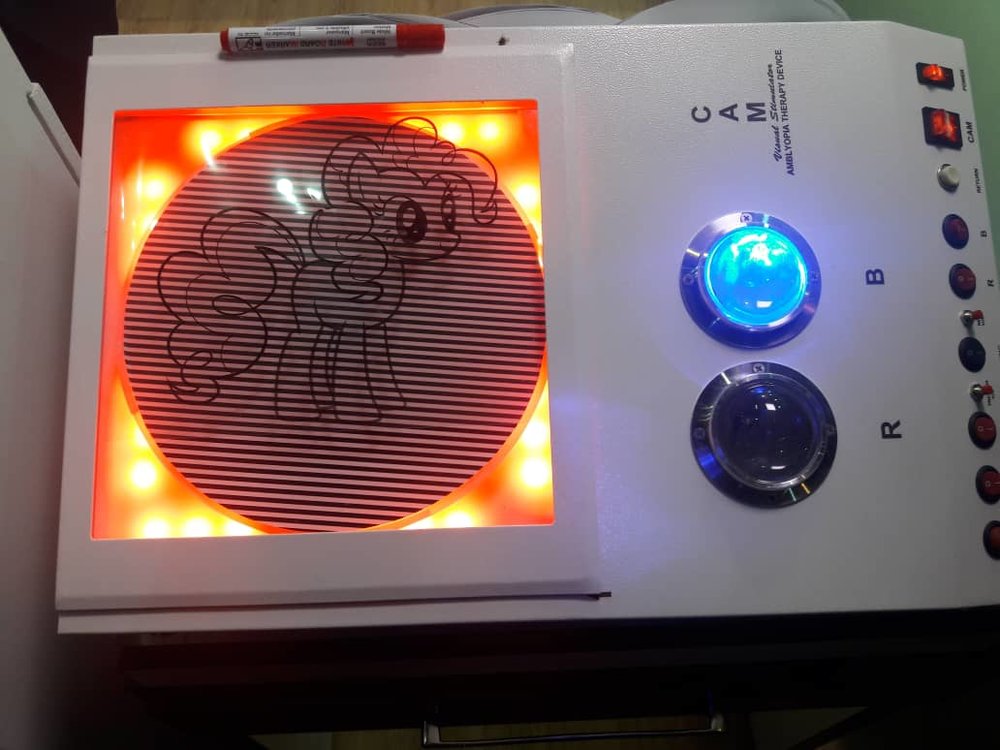Iranian incubator manufactures amblyopia therapy device

TEHRAN — An Iranian incubator at Iran University of Medical Sciences has manufactured a device for treatment of amblyopia, also known as lazy eye, IRNA news agency reported on Saturday.
Amblyopia is a vision development disorder in which an eye fails to achieve normal visual acuity, even with prescription eyeglasses or contact lenses.
The newly developed limited edition device can perfectly help in shortening the treatment course, Mehdi Zare Bidaki, the project manager of the amblyopia therapy device, said.
Typically amblyopia becomes much harder to treat after about 7-9 years of age, however, the device is capable of treating people with lazy eye aging above 7 or even 50 years, Zare Bidaki added.
The device has been manufactured for the first time in Iran, he said, adding that the device will be also effective in treatment of strabismus [crossed eyes] or some other apparent eye misalignment, as well as age-related eye diseases.
Currently it takes one to two years for lazy eyes to be treated, though it might take even longer depending on the type and severity of the disease, he said, stating that using amblyopia therapy device patients can be treated after receiving 10 to 17 therapy sessions, each taking 20 minutes.
While treatment were believed to on work with children aging under 7 now everyone can receive therapy, he highlighted.
Elsewhere in his remarks Zare Bidaki mentioned vision screening tests run by Iran’s Welfare Organization which resulted in decreasing the disease incidence from 2 percent to 0.2 percent nationwide.
According to All about Vision, amblyopia begins during infancy and early childhood. In most cases, only one eye is affected. But in some cases, reduced visual acuity can occur in both eyes.
Causes of amblyopia
Amblyopia commonly starts when one eye has much better focus than the other. Sometimes, one is more farsighted or has lots of astigmatism, but the other doesn’t, according to WebMD.
When your child's brain gets both a blurry image and a clear one, it starts to ignore the blurry one. If this goes on for months or years in a young child, vision in the blurry eye will get worse.
Sometimes a child’s eyes don’t line up like they should. One could turn in or out. The doctor will call this strabismus, and it can also lead to amblyopia. Kids who have it can’t focus their eyes together on an image, so they often see double.
All children should be tested before they are school-age.
How to treat amblyopia
The most common method is to force your child’s brain to start using the weak eye. First, the doctor will correct any underlying problems in that eye, like nearsightedness, farsightedness, or astigmatism. Most kids with amblyopia also need glasses to help their eyes focus. If a cataract is blocking light from her eye, the doctor may recommend surgery to remove it.
Then he’ll give her a patch to wear over her strong eye. At first, she’ll have a hard time seeing with just the weak eye. But it’s important that she wear the patch. Her vision will get better, though it might take weeks or months for that to happen. Follow the doctor's instructions carefully and bring your child in for scheduled visits so the doctor can see how the treatment is working.
After the doctor says her vision is back to normal, she won’t have to wear the patch all the time. But sometimes when kids go back to using both eyes, they lose some vision in the weak eye. If that happens, she might have to wear the patch again.
In mild cases of amblyopia, the doctor might suggest using an eye drop called atropine. It blurs the strong eye so your child won’t need to wear a patch.
If strabismus prevents her eyes from moving together like they should, your doctor might recommend surgery on her eye muscles.
With early diagnosis and treatment, most children will gain vision. Amblyopia becomes much harder to treat after about 7-9 years of age, so make sure your child gets eye exams early on.
Particularly if lazy eye is detected early in life and promptly treated, reduced vision can be avoided. But if left untreated, lazy eye can cause severe visual disability in the affected eye, including legal blindness.
MQ/MG
Leave a Comment